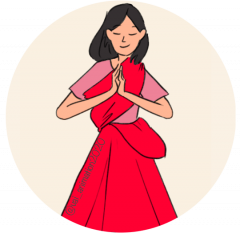We had a really lovely session with Robert Bradbrook (Head and Senior Tutor at National Film and Television school) yesterday! 😀 He spoke about character personalities and how to develop characters with interesting traits that will keep the audience invested in the story!
He got us thinking about personality traits such as positive, kind, domineering, etc and that it is important for our character to have at least three traits and one flaw. The flaw can make the character more interesting and it can possibly be the thing that is challenged; the one that makes the character change or transform towards the end.
The best way to start is by asking questions:
- If there is a piece of chocolate cake lying in the common kitchen fridge, would your character eat it? Leave a note after taking a slice? Not eat it and feel sorry about thinking about eating it?
- What would they do if they arrived late for work? Apologise? Pretend as though it didn’t matter?
- In a crowded bus, would they give up their seat for someone elderly? Would they overdo it?
Putting our characters in these day to day situations can help in creating well rounded characters and add a lot to their personality!
Here are some primary character types that Robert mentioned:
- Flat
- Round
- Static (character remains the same throughout the story)
- Dynamic (personality changes and evolves)
We also usually have the protagonist who wants something and the antagonist who stops him from getting it.
I’m also going to put these points that I jotted down during his session here for future reference:
WHAT DO CHARACTERS WANT?
- Control, Acceptance, Reputation, Freedom, Self Esteem, Health, Love
- Tapping into the Human Psyche and seeing ourselves in those characters on the screen and showing empathy towards them.
WHAT IS STOPPING THEM GETTING IT?
- physical thing, mental, flaw or themselves?
WHY DO THEY WANT IT NOW?
- Putting an urgency to the situation
WHAT IS THE EVENT?
- Exploring what the event is – for instance stuck in a changing room, at a bar..particularly within a moment of time
WHAT DOES THE CHARACTER FEAR?
- usually what they want is what they fear, so what is their secret?
IS THEIR WORLD IN BALANCE OR NOT?
- Do they belong/not belong in their world? The feeling of being out of place often means that the character wants to be accepted
Robert gave us the example of Mr. Incredible – He wants reputation and self esteem. His biggest flaw is his ego and he eventually needs to learn to be a team player and that’s how he grows as the film progresses.

We also had a small exercise that we did during the later half of the session. We picked a chair we found around our house and then turned it into a character.
We had to give it a name and an age, 3 personality traits, 1 flaw, think about what they want and what is the event. We did this in a group and then came up with a story!

Here is my chair, named Bernard and he is in his mid 40s. His personality traits are that he is strong, determined and reliable. His flaw is that he is stubborn and short tempered. At the time I wasn’t sure about what he wanted so I just said that he wanted to avoid a mid life crisis and just enjoy his life.
My classmates and I then came up with this story that we had created with our respective chairs as people:
Bernard goes to holiday in Tenerife with younger girlfriend Evette (Mid 20s) and his son Kyle (13), who is energetic. They end up getting locked into their hotel room. Kyle being the hyperactive teenager, starts getting angry and more hyper which in turn irks Bernard to no end. Bernard came to have some peace and quiet but it ends up being the opposite of that. Evette being a calm minded person tries to relentlessly calm them down. It ends with Kyle retorting, “You can’t tell me what to do you’re not my real mom!” – THE END
We kind of left the ending in the wind, but now that I look back on my character I feel like it doesn’t fit the personality the chair resonates. Looking back at this chair today makes me think of my dad who is also strong, determined and reliable with his occasional stubborn and short temperament. Also, I probably wouldn’t have named him Bernard and would probably have made him around late 50s and also given him a better purpose of now wanting to be a loving family man, who gets to spend and enjoy his time with his kids now that he’s retired.
